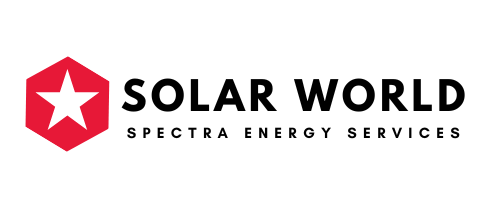On Grid Solar System
An On-grid solar system is a system that works along with the grid. This means that any excess power can be fed to the grid through net metering. Many residential users are opting for an On-grid solar system as they get a chance to enjoy credit for the excess power their system produces and save on their electricity bills. You will always have power, either from the solar system or from the grid. They do not have batteries.
Solar PV modules convert Sunlight into energy and generate DC Power during the day time. DC Power is supplied to the inverter, which convert DC power to AC power and supplied to domestic loads and Balance power is Exported to Electricity Board. Net meter is synchronized with solar ongrid and EB Grid Power.
Main Components of Grid-Connected PV Systems
1. Solar Panel - Solar panels are the main components of the on-grid solar system. They comprise more than 50% of the total cost of a solar system and are the components that capture solar energy and convert solar energy into electrical energy.
2. Solar Inverter - At the heart of the grid-connected system, the inverter extracts as much DC power as possible from the PV array and converts it into AC power at the right voltage and frequency for feeding into the grid or supplying domestic loads. Solar Inverters help in converting the DC output produced from the solar panel into AC supply.
3. Panel Stand - Panel stands are also a major component of the entire solar system. Some people do not give much heed to this component and try and save a few bucks by using a low-quality stand. However, remember that this stand will support the solar panels and if the stand is not sturdy your solar panels could just fall resulting in a heavy loss. It is the skeletal structure holding the panel in the proper position. These stands are generally made of aluminum or galvanized iron. Solar panel stands can be fixed or movable to track the sun.
4. Solar Wire - Solar Wire or Solar Cable is the medium through which electricity is transferred from solar panels to the inverter. Generally, there are two types of wires in the market, such as AC Wire and DC Wire. It is called a solar wire as the solar panel output is DC current.
5. DCDB / ACDB - DC Distribution Board or DCDB is used for connecting the output power from the solar panel to the input of the inverter while AC Distribution Board or ACDB distributes the electrical power from a solar inverter to the AC load system through an energy meter.
6. Earthing Kit - An earthing kit is used to protect the on-grid solar system from thunder.
7. Lighting Arrestor - Lightning Arrestor is used to protect the on-grid solar system from lightning
8. Net Meter - Net metering is a special metering and billing agreement between Electricity board and customers, which facilitates the connection of small, renewable energy-generating systems to the power grid. It is an important component in an on-grid solar system as it keeps the reading to claim credit in your future electricity bills. For solar energy, Net Metering is also very important as solar energy unlike other forms of renewable energy is produced a lot in residential and commercial segments.
9. Safety Equipment - To safeguard the solar system from damages such as lightning and other faulty conditions, protection devices are used. These comprise of surge arrestor, circuit breaker, grounding method, etc.
10. Installation Accessories - These include installation accessories like wires, cabling, mounting structures, junction boxes, etc.
OnGrid System offers dual benefits, first by reducing the electricity usage from grid and secondly by minimizing the net payable amount 80 - 90 % by adjusting the cost of electricity supplied to the solar ongrid by the Solar System

